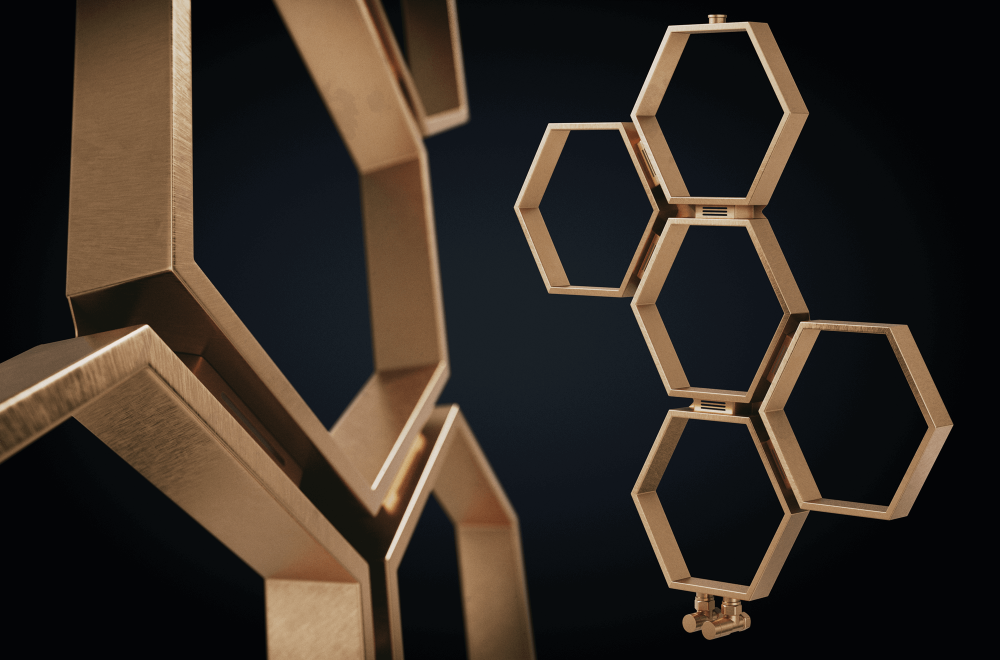Blog
What is 3D rendering and what does it involve?

What is 3D rendering?
It is the process of transforming 3D data into finished, realistic images or animations. Its importance in today's technology is huge and growing. Formerly associated mainly with computer graphics, it has now moved beyond this to become ubiquitous in the film industry, video games, architecture, product design and many other fields where realistic and phenomenal images are crucial. Despite this, for many people the concept of rendering still remains a mystery. In this article, we will take a look at what rendering is in 3D graphics, what rendering is all about and its importance to modern technology. So let's start at the beginning. Rendering - what exactly is it?

What is 3D rendering?
3D rendering is the process of transforming a mathematical model of a three-dimensional object into visually appealing and realistic images on a two-dimensional plane (e.g. a computer or TV screen). In short, it involves transforming 3D model data into finished graphics to be displayed on the screen or saved as a graphics file. The basic element of this process is the 3D scene, i.e. the virtual space where the models, lighting, cameras and other elements that make up the final image are placed.
With 3D modelling, it is possible to show products from any perspective, from different lighting angles and in different scenarios. This makes it possible to understand proportions, details and quality of workmanship in a way not possible with traditional photographs. 3D visualisations are becoming an indispensable tool in the presentation of products to both clients and investors, helping to increase the attractiveness of the offer and shorten the design cycle.


How does 3D rendering work? A closer look at the process from the technical side
Rendering (translating as 'making') is an advanced and technically demanding process that plays a fundamental role in perfecting photorealistic visualisations. To understand how 3D rendering works, it is useful to delve into the basic technical process. In this way, we can gain an insight into the intricacies involved in transforming a two-dimensional model into a realistic representation.
The first step in this process is to create the skeletal structure of the rendered object. This serves as the basis on which subsequent layers are built. Textures and materials are then applied to give the object realistic characteristics such as colour, reflectance and texture. Finally, lighting and shadows are meticulously created to ensure an accurate representation of depth and realism in the scene. Essentially, 3D renders are a complex interplay of geometry, materials, lighting and shading techniques that work together to bring virtual objects to life.
To better understand what 3D rendering is all about, let's take a closer look at its various components.
- Geometry: the geometric properties of an object dictate its shape and form in virtual space. By defining vertices, edges and walls using mathematical representations or polygonal meshes, precise shapes can be constructed for accurate rendering.
- Materials and textures: Once the basic geometry is established, materials and textures are applied to further enhance realism. These attributes determine how light interacts with surfaces, specifying parameters such as colour, transparency, shimmer, etc., thus simulating the real-world appearance.
- Lighting and shading: lighting plays a key role in determining the visual interaction of objects with their surroundings. Accurate placement of light sources, together with appropriate shadow generation, allows the entire scene to be adequately illuminated while giving the perception of depth.

Product rendering as an example of how your company can benefit?
In the field of product visualisation, 3D rendering is a key part of the design and development process for new products. With this advanced technology, manufacturers gain a number of benefits that affect both the efficiency of the process and the quality of the final products. When is it a good idea to opt for rendering? Why is 3D rendering so important in the field of product visualisation?1. Time and cost savings: With 3D product rendering, manufacturers can avoid creating multiple physical prototypes, which are costly and time-consuming. Instead, they can quickly iterate and make changes to virtual models, saving time and money.2. Improving design decisions: For designers, 3D product renderings provide a better understanding of product appearance and function. Full-shape visualisations, with the right materials and lighting, allow better evaluation of the design from different perspectives.3. Customer collaboration: 3D visualisations are an excellent tool for presentations to customers, giving them the chance to better understand the design and provide valuable feedback before production begins.4. Creating compelling marketing materials: Photorealistic 3D rendering allows the creation of impressive graphics and animations that attract customers' attention and help increase product sales.5. Testing different options: Virtual rendering makes it easy to create different product variants, allowing you to test different options and adapt your design to market requirements.
#render3d#wizualizacja#realizm#e-commerce#sztucznainteligencja#rendering

Rafał
Specjalista ds. marketingowo-handlowych